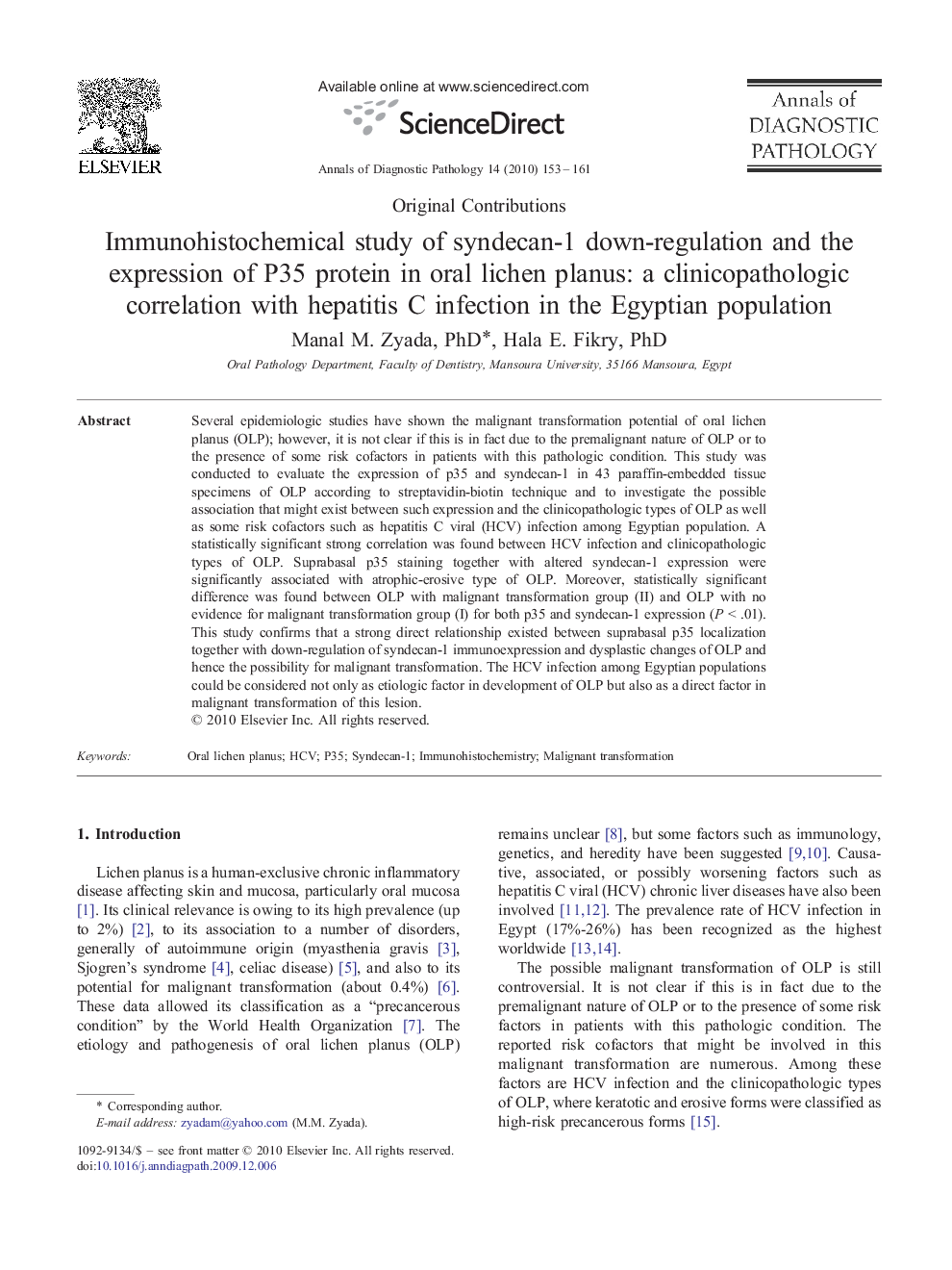| Article ID | Journal | Published Year | Pages | File Type |
|---|---|---|---|---|
| 4130036 | Annals of Diagnostic Pathology | 2010 | 9 Pages |
Several epidemiologic studies have shown the malignant transformation potential of oral lichen planus (OLP); however, it is not clear if this is in fact due to the premalignant nature of OLP or to the presence of some risk cofactors in patients with this pathologic condition. This study was conducted to evaluate the expression of p35 and syndecan-1 in 43 paraffin-embedded tissue specimens of OLP according to streptavidin-biotin technique and to investigate the possible association that might exist between such expression and the clinicopathologic types of OLP as well as some risk cofactors such as hepatitis C viral (HCV) infection among Egyptian population. A statistically significant strong correlation was found between HCV infection and clinicopathologic types of OLP. Suprabasal p35 staining together with altered syndecan-1 expression were significantly associated with atrophic-erosive type of OLP. Moreover, statistically significant difference was found between OLP with malignant transformation group (II) and OLP with no evidence for malignant transformation group (I) for both p35 and syndecan-1 expression (P < .01). This study confirms that a strong direct relationship existed between suprabasal p35 localization together with down-regulation of syndecan-1 immunoexpression and dysplastic changes of OLP and hence the possibility for malignant transformation. The HCV infection among Egyptian populations could be considered not only as etiologic factor in development of OLP but also as a direct factor in malignant transformation of this lesion.
